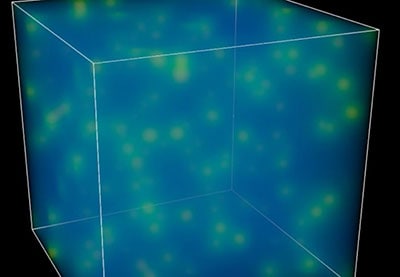Flash Physics is our daily pick of the latest need-to-know developments from the global physics community selected by Physics World‘s team of editors and reporters

FAST joins alien search
The $180m Five-hundred-meter Aperture Spherical radio Telescope (FAST) – the world’s largest single-aperture radio receiver – has joined the Breakthrough Listen programme, which launched in July 2015 to look for intelligent life beyond Earth. FAST was completed in September and is located in a natural depression in Guizhou province in southern China. The telescope consists of 4450 reflecting panels with a collection area that is more than twice as big in size as its nearest rival – the 300 m Arecibo telescope in Puerto Rico. FAST will now join the Green Bank Telescope in the US and the Parkes Observatory in Australia in hunting for alien signals, with the three observatories exchanging observing plans, search methods and data. “‘Are we alone?’ is a question that unites us as a planet,” says Yuri Milner, founder of the Breakthrough Initiatives, “And the quest to answer it should take place at a planetary level too. With this agreement, we are now searching for cosmic companions with three of the world’s biggest telescopes across three continents.”
Warm dense matter simulation sheds light on fusion

A new computer simulation of warm dense matter that could improve laser plasma fusion has been unveiled by physicists in Germany, the US and the UK. The simulations allowed Matthew Foulkes and colleagues at Imperial College London, Christian Albrechts University Kiel and Los Alamos National Laboratory to determine the phase diagram of warm dense matter – which exists in the temperature range between condensed matter and plasma (1000–100,000 K) and is characterized by hot electrons that move around within tightly packed atoms. It is an important step in the process of laser fusion, whereby intense lasers compress and heat a solid target driving the atomic nuclei together until they fuse and release large amounts of energy. As the electrons in the target are heated by the lasers, the target transforms into warm dense matter for just a few microseconds. This fleeting phase can be crucial to achieving fusion because it affects how the nuclei will be further compressed. If this compression is uneven, then significant amounts of fusion will not occur. Understanding the behaviour of the electrons during the warm dense matter phase could help physicists to improve the compression process. The simulations are described in Physical Review Letters and they could also shed light on warm dense matter in astronomy, including the behaviour of Jupiter’s core and the atmosphere of white-dwarf stars.
Theorist trio bag APS prize for particle accelerators
The 2017 Robert R Wilson Prize for Achievement in the Physics of Particle Accelerators has been awarded to theoretical physicists Sekazi Mtingwa of the Massachusetts Institute of Technology, James Bjorken from SLAC National Accelerator Laboratory and Anton Piwinski at DESY. The trio were given the prize “for the detailed, theoretical description of intrabeam scattering, which has empowered major discoveries in a broad range of disciplines by a wide variety of accelerators, including hadron colliders, damping rings/linear colliders, and low emittance synchrotron light sources”. The annual prize is awarded by the American Physical Society and recognizes outstanding achievement in the field of particle accelerators. The $7,500 award will be split between the recipients. According to Fermilab, Mtingwa “is the first African-American scientist to receive a prize from the American Physical Society”. Mtingwa, who now sits on the committee for the African Light Source, penned a Forum article for Physics World earlier this year – “A shining light for African science” – that called for physicists to get behind African plans to build the continent’s first ever synchrotron light source.
- You can find all our daily Flash Physics posts in the website’s news section, as well as on Twitter and Facebook using #FlashPhysics. Tune in to physicsworld.com later today to read today’s extensive news story on the first laser altimeter for inter-planetary flight.



